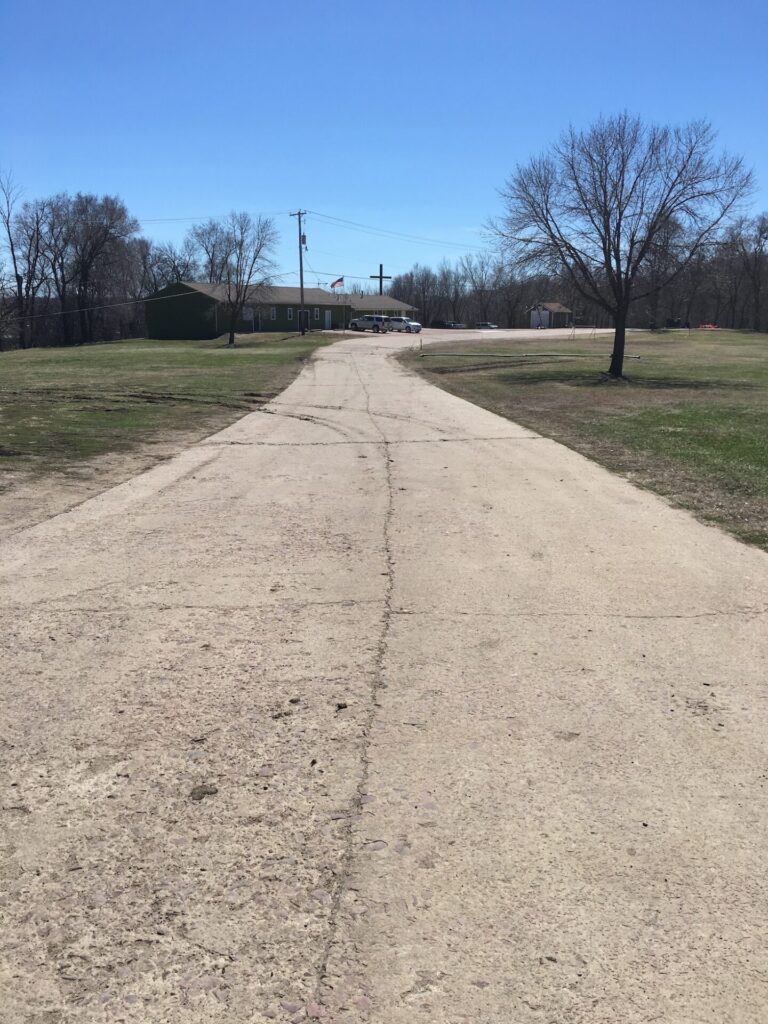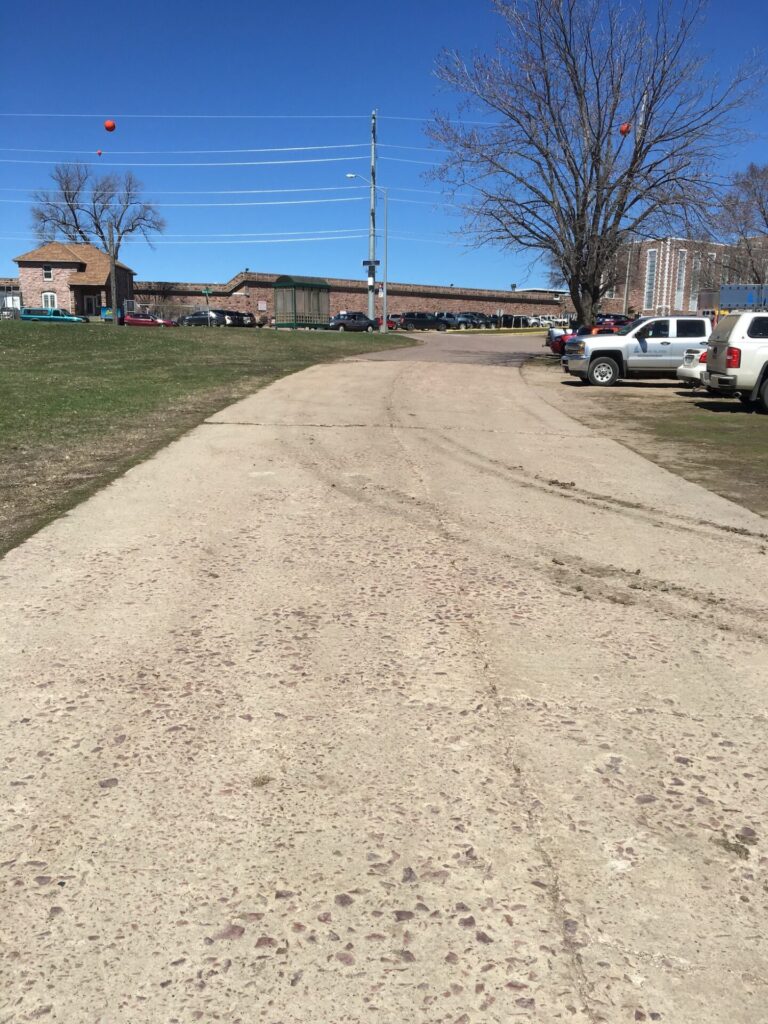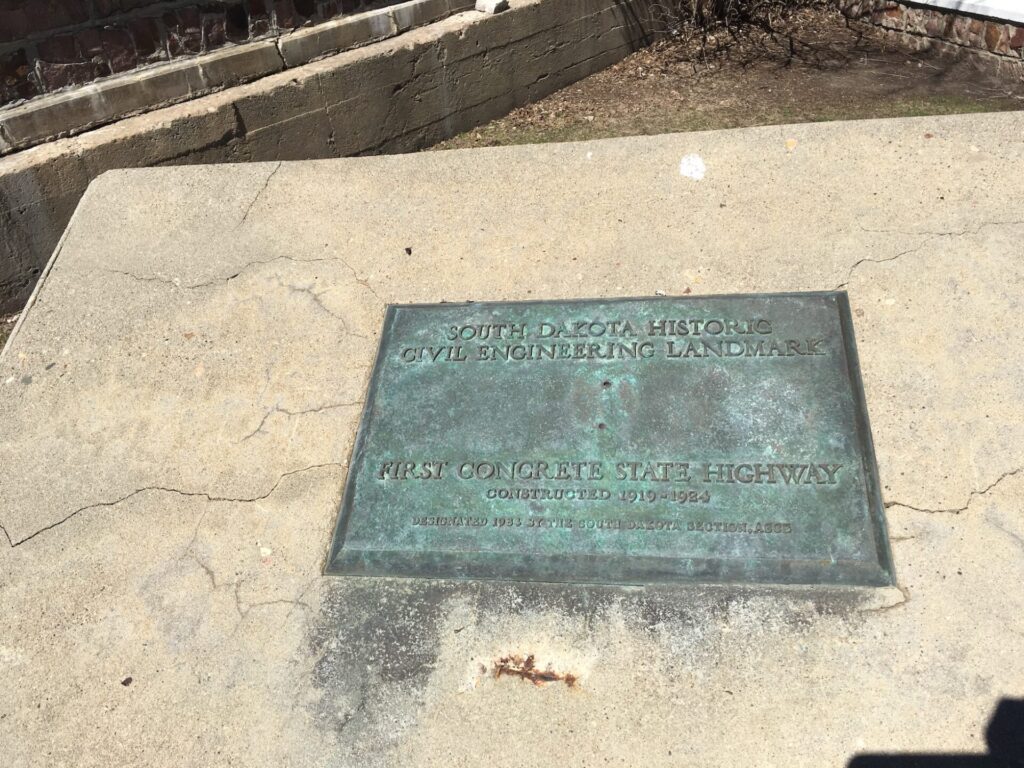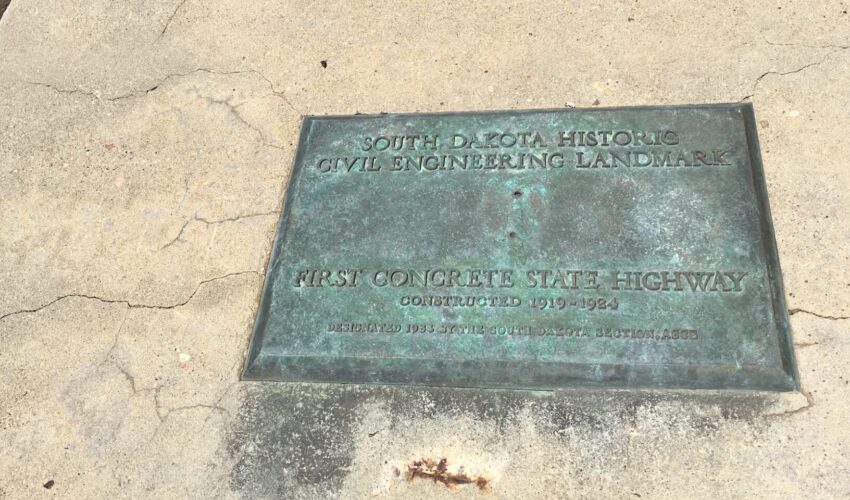In service for a century: Concrete road proves quality materials last
Nov. 14, 2023
This paid piece is sponsored by Knife River South Dakota.
About 700 feet of concrete on the north side of Sioux Falls has a century-old story behind it.
Built in 1923 and located in two segments near the South Dakota State Penitentiary, the surface marks the first concrete road built in South Dakota.
Today, one portion serves as a parking area mainly for penitentiary employees, and the other is a driveway to a church.
“A lot of people don’t know that it exists,” said Jason Reaves, executive vice president of the South Dakota chapter of the American Concrete Pavement Association.
In fact, until recently, Reaves was one of them.
“A colleague from my national office was in town and is a huge historian, and he went down to the Old Courthouse Museum and found out about it,” Reaves said.
He found multiple documents detailing the project. The first, dated 1923, came from the Black Hills Engineer trade publication.
“At the time, with the exception of a few of the larger towns, very little hard surfacing had been tried in this state,” the article said. “It was decided with the consent of the Bureau of Public Lands that a test mile should be tried, and the action of this carefully noted with the idea, if satisfactory, of hard surfacing more of our roads at a later date.”
A federally funded project was running between Sioux Falls and Dell Rapids and passing through the grounds of the state penitentiary, where it was decided the test mile would be built. C.H. Atkinson Paving Co. of Sioux Falls was awarded the contract with a winning bid of $18,230.85. The cement came from Mason City, Iowa.
“Local material in the nature of crushed stone and sand of excellent quality were available within three miles of the work,” the article said.
A central mixing plant at the switch track to the penitentiary was used for the material, and both stone and sand were unloaded directly from rail cars into bins meant for mixing.
“One of the main features of the road is that it is Vibrolithic,” Black Hills Engineer article said. “The method consists of the placing of a top stone on concrete just poured and this stone vibrated into the concrete, thereby giving a much denser concrete and a surface which is practically beyond wear.”
That proved prophetic. Decades later, in 1990, an article from the Quartzite Rock Association revisited the historic stretch of road. It quoted the president of the Vibrolithic Co. of Minneapolis, who wrote to the state in 1923 that the road is “a very good piece of work. I make this comment after comparing it with many miles of paving in Minnesota and other states with which I am familiar,” he said.
“I can further say without any prejudice whatsoever that other states in their initial attempt at hard surfacing constructed many miles of paving before attaining the results which you have in this project of less than a mile.”
While that mile was done in concrete, the rest of the 18-mile stretch from Sioux Falls to Dell Rapids was graded and then given gravel surfacing. The South Dakota highway was part of the King of Trails Highway that extended from Winnipeg to the Gulf of Mexico.
A plaque commemorates what remains of the initial paved mile, and it was honored as a civil engineering achievement 33 years ago from the American Society of Civil Engineers.
To recognize the century milestone, Reaves recently hosted the South Dakota Department of Transportation and its commission to see the pavement and recognize its longevity.
“The words ‘sustainable’ and ‘resiliency’ have really come to fruition in infrastructure these days, and this is an example of something that fits that goal even though it was built 100 years ago,” Reaves said. “It told me that we can build a road to last 100 years, especially if you maintain it, put down the proper mix with the right finishing methods.”
Those who work in the industry today know that’s true.
“I had no idea a road like that had been in surface so long, but at the same time, I’m also not totally surprised,” said Stu Horsted, vice president of sales at Knife River South Dakota.
“We use the same ready-mix concrete product today, and this example shows what a durable product it is and that, if it’s treated well, it can last a long time.”
While the chunks of quartzite in the pavement are larger than what’s used today – 3 inches versus 1 inch that’s typically the largest today – “otherwise, it’s a similar approach, a similar product and hopefully many of the projects we’re working on today will be maintained well and demonstrate longevity like this for decades into the future,” Horsted said.










